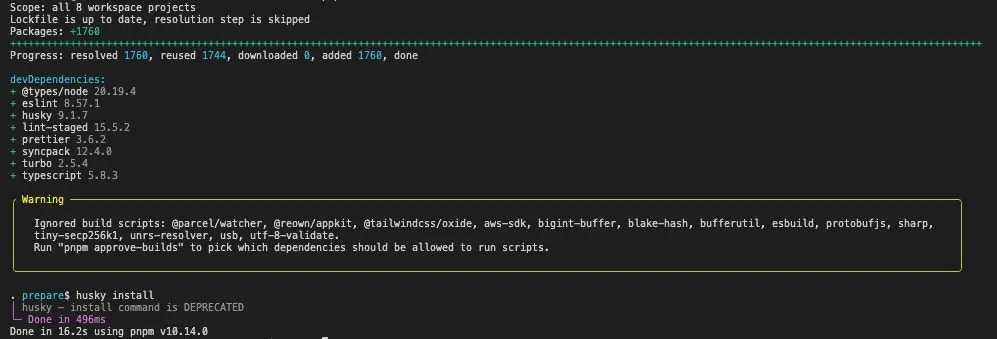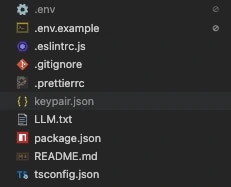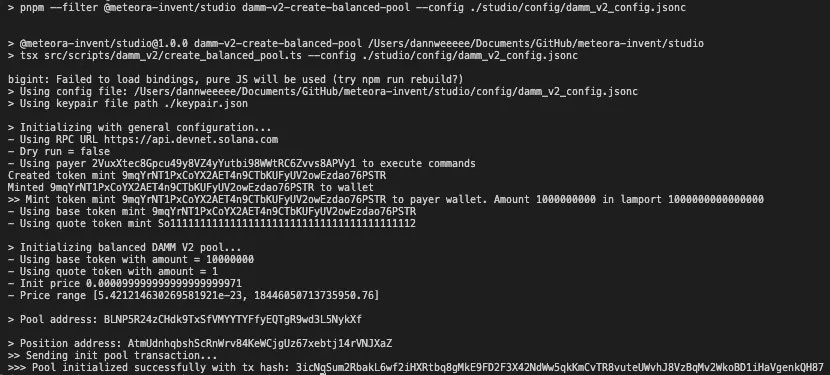
What You’ll Achieve
By the end of this quicklaunch, you’ll have built a liquidity pool on Meteora by:- Configuring your liquidity pool settings
- Interacting with our DAMM v2 program
- See your liquidity pool in action on Meteora
Prerequisites
- Node.js >= 18.0.0
- pnpm >= 10.0.0
Terminal
Steps
1
Clone and Setup Meteora Invent
Meteora Invent is a toolkit consisting of everything you need to invent innovative token launches on Meteora. Run the following command in your terminal to get started.Once you’ve cloned the repository, you’ll have a new project directory with a meteora-invent folder. Run the following to install pnpm and the project dependencies.
Terminal
Terminal

2
Optional: Start a Local Test Validator
In Meteora Invent we provide an optional command for you to run a local validator to test your pool before deploying it to devnet or mainnet. Run the following command in your code editor terminal to get started.This will start a local validator on your machine which will be hosted on

Terminal
http://localhost:8899. 
3
Setup Environment Variables
We provide an easy way to setup environment variables when getting started. Run the following command in your code editor terminal to get started.This will copy the example environment variables file to your This will generate a

Terminal
.env file. Configure the following variables:PRIVATE_KEY- Your private key for the wallet you will be using to deploy the pool.
Terminal
keypair.json file in the studio directory which will be used for all actions in this guide. 
4
Configure your DAMM v2 Pool
Navigate to the
studio/config/damm_v2_config.jsonc file and configure your DAMM v2 pool settings. Set your DAMM v2 configuration
Set your DAMM v2 configuration
Your can configure everything DAMM v2 pool related in this file.
The comments in the file are to help you understand the different settings you can configure. Please ensure that you read through the comments while configuring your pool.
damm_v2_config.jsonc
5
Create your DAMM v2 Pool
After configuring your DAMM v2 pool settings in
damm_v2_config.jsonc, you can now create your pool by running the following command.- damm-v2-create-balanced-pool
- damm-v2-create-one-sided-pool
If you don’t have a base mint, you can configure If you already have a base mint, you can provide it via the CLI with a 
createBaseToken in the config file and run the
following command.--baseMint flag and run
the following command.Creating a balanced pool will require the
quoteAmount to be set in the damm_v2_config.jsonc file.


